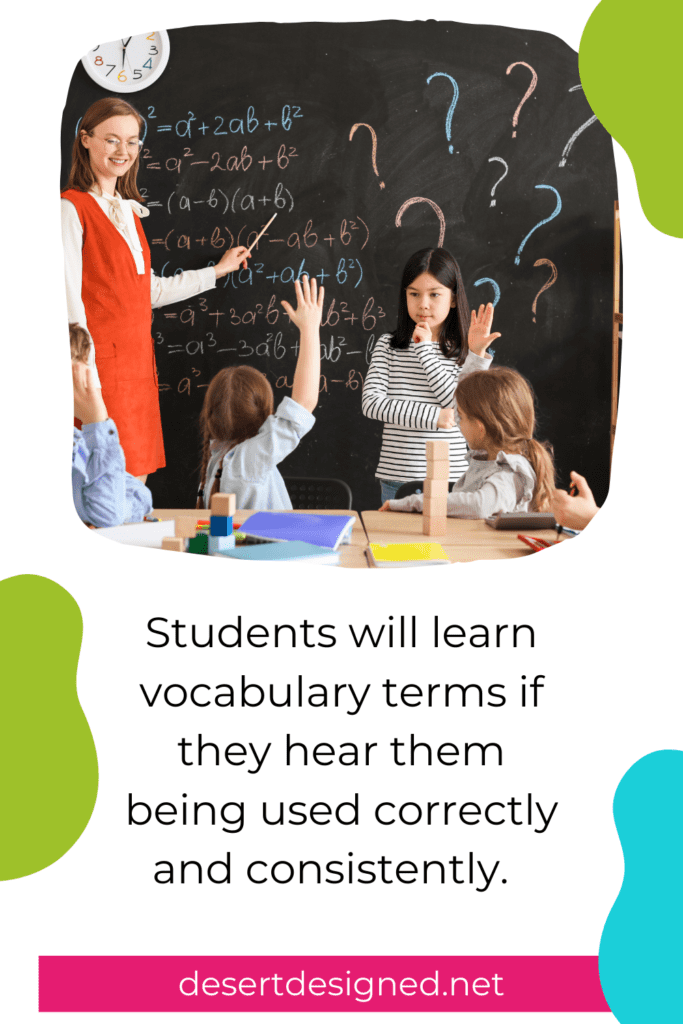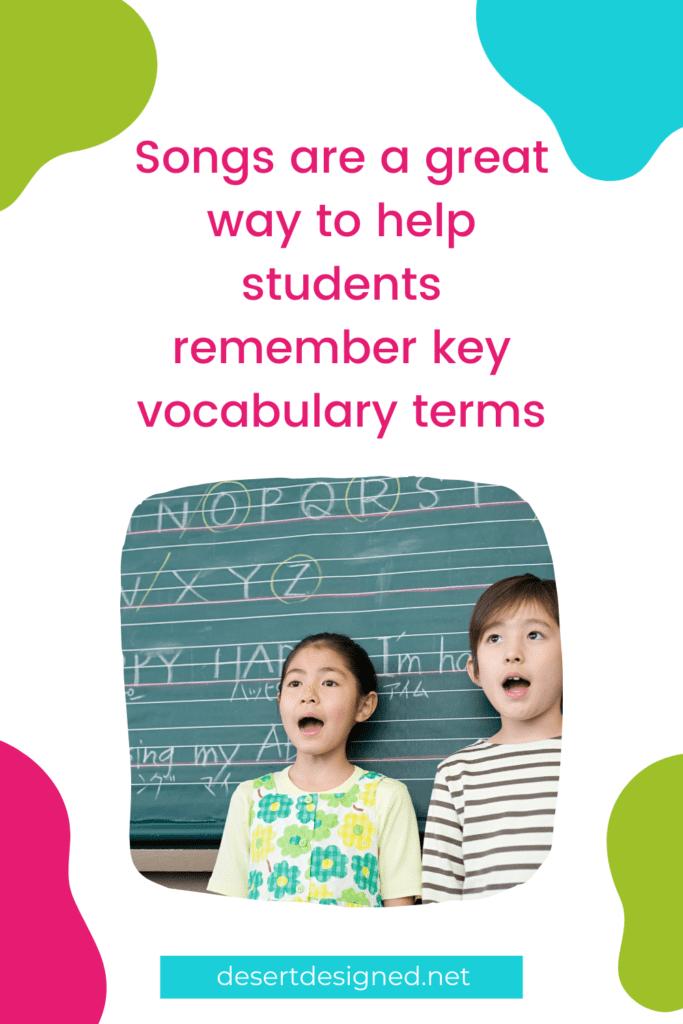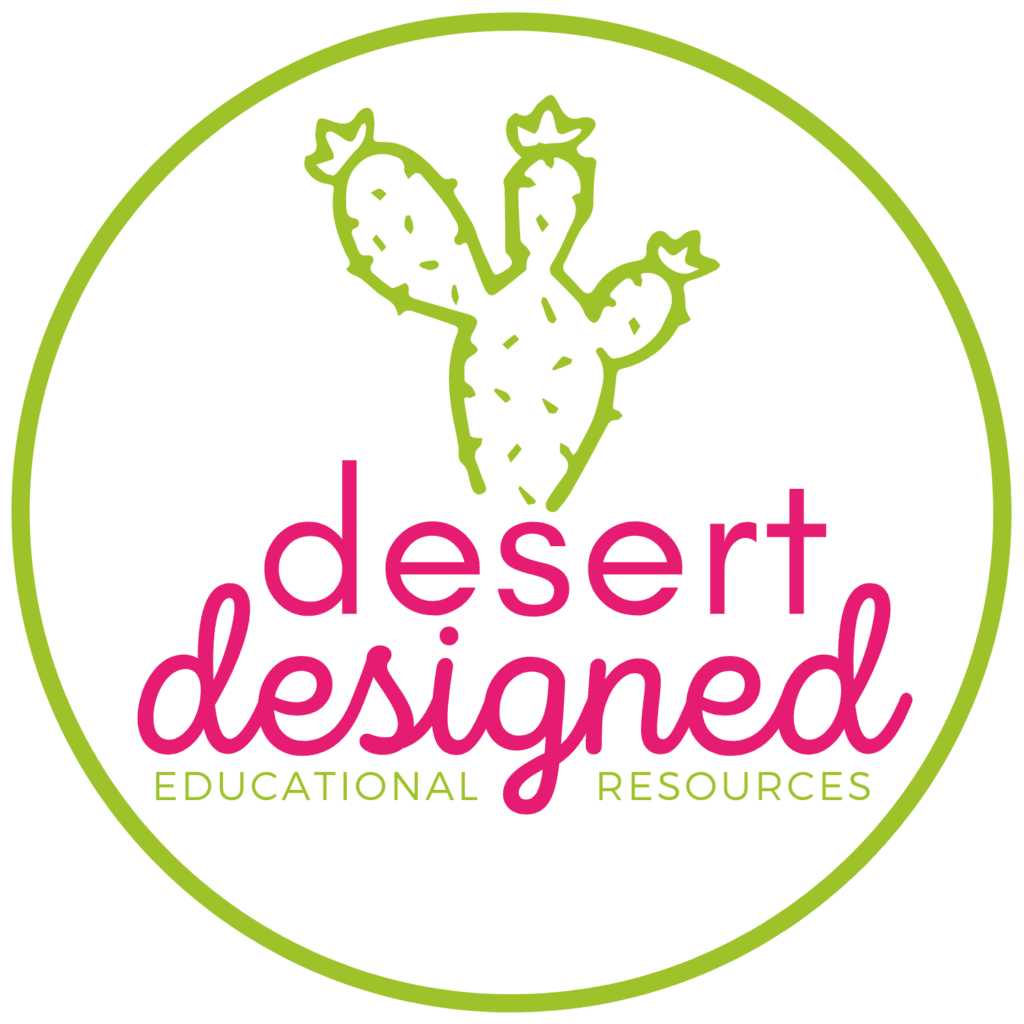Vocabulary in math instruction is much more important than you ever realized. Explicit vocabulary instruction leads to improved math comprehension, increased test scores, and student confidence. These teaching strategies for vocabulary will improve your instruction and your students’ confidence!

Have you ever seen the Game Night Episode of Big Bang Theory? In this episode, Sheldon, Penny, Leonard, and Amy are playing Pictionary (boys vs. girls). You can imagine how much misunderstanding of vocabulary ensues. While the girl’s team fairly effortlessly draws and guesses simple pictures, Sheldon, in his scientific mind, makes everything far too complicated. His drawings have abstract, deep meanings, and he misinterprets Leonard’s drawings as sophisticated science concepts.
Now, take a minute and imagine if Sheldon had been allowed to make the drawing terms for the game! This would have been a nightmare for most of the people involved other than him!
What does this have to do with the teaching of vocabulary? Well, it teaches us two valuable lessons. First, we need to make sure that the WAY we explain and define the terms is accessible to the students. Secondly, we need to make sure that they have access to understanding the most important vocabulary terms!
Are you looking for more ideas to mix up your math lessons and engage your students? Check out my FREE Guide to an Engaging Math Lesson! It has tons of ideas for creating variety in your math lessons while keeping your students engaged and learning!
Deciding Which Vocabulary Terms are Important to Teach
When it comes down to it, there is a wide range of terms that are used only in math. If we haven’t taught our students to speak this math language, we are setting them and ourselves up for a great deal of frustration down the line. It can be tricky, however, to determine which terms are important to teach students. It’s also difficult to know which teaching strategies for vocabulary we should use.
To begin, you need to have a good sense of their current understanding. You can do this formally or informally.
My daughter will be going into the fifth grade next year (the grade I teach). She recently had a friend over, and I showed the girls a division problem in the long-division format: 24 / 6 = 4. I asked them if they had a name for the different numbers within the problem. They both stared at me with blank faces. When I pointed to the 24, one of the girls said, “denominator.” From there, she called the 6 a numerator. (I was glad they MAY realize that fractions and division are synonymous, but these numbers are reversed.) Then, I pointed to the four. The girls had no clue. They didn’t even call it an answer.
If they are in my class next school year, this is valuable information for me to see a starting point for explicitly teaching math vocabulary. I need to start at the beginning.
On the other hand, you may realize that your class has a solid foundation. In this case, some reinforcement and some more advanced words may be more appropriate to choose.
In the problem above, it is more important for me to be sure the girls are familiar with the term quotient than the terms divisor and dividend. How did I determine that quotient is the most essential word to teach of the three? This is a word that often comes up in math problems and will be more frequently used when talking about math.
Now, if the kids already knew what a quotient was, I’d progress to helping them learn divisor and dividend. We do not need to throw every mathematical vocabulary term at students all at once for them to be successful in learning how to speak and understand the language of math.
How to Improve Math Vocabulary
You may be wondering, how do I get students to improve their understanding of math vocabulary in a way that they will be engaged and really learn what I need them to know? There are many teaching strategies for math vocabulary you can employ to do this.
Use the Math Vocabulary Terms When You Speak
This may seem obvious, but I have seen many teachers skirt around vocabulary words. I can see what they are doing. The intention here of these teachers is to talk in “kid-friendly language.” They are trying carefully to not be like Sheldon in the TV episode I described. The problem is, they take it too far.

If we aren’t careful, we can end up leaving out the words the kids need to learn. A vicious cycle ensues because the students are not hearing the words used in the classroom. Since they do not hear the words, they do not begin to adapt them into their lexicon. Without the words in their word bank, they don’t understand the words. The cycle ensues.
Next time you catch yourself oversimplifying the math vocabulary needed to talk about the process, take a moment and rephrase.
An Example of Using the Vocabulary During Instruction
A great example shows up when we start working on long division. The majority of students do not know the difference between a divisor, a dividend, and a quotient. To them, they are the “outside number”, inside number, and answer. Or, even worse, they just don’t even know what to call them or call them the incorrect terms.
So, how do you solve this problem? As you teach, continuously name the parts of the problem using their proper vocabulary terms. When you first get started, name not only the term but what it means. For example, “We will write the quotient here, above the problem. Remember, a quotient is an answer to a division problem.”
Teaching Gestures and Call Backs During Explicit Vocabulary Instruction
The next step after shifting your way of speaking is to create systems in your classroom to help reinforce the vocabulary terms and their meanings. The first time you introduce a new vocabulary term, teach a gesture and/or callback for students to use when they hear you say that word. For example, you may stop every time you use the word ‘quotient’ and have the students repeat the definition, use a hand gesture to show the meaning, or state the definition yourself and have the class respond in unison with the word.
Teaching Vocabulary in Interactive Notebooks
I add the relevant vocabulary terms to every notebook entry we do as a class. Some teachers like to create a glossary in the notebooks for students to record the definitions. The key here is consistency and redirecting students to use the definitions.

If a student asks, “What is the sum, again?” Direct them to their notebook to find the definition. Then, have the student read it out loud to you or a partner to reinforce the meaning. Simply writing definitions in a notebook one time will not lock them in for the majority of students. Consistency is key!
Vocabulary Word Walls or Anchor Charts as a Teaching Strategy
Many teachers have reading word walls in their classrooms, but math word walls are much less common. Consider posting a word wall with math vocabulary terms and their definitions or visual reminders for students to refer to throughout the school year.
Don’t have space for the word wall? How about having a spot for an anchor chart that includes the vocabulary that will be necessary for the unit you are currently working in? To make the anchor chart or word wall even more effective, involve the class in choosing the words they think will be most relevant and helpful in the current unit. When we involve kids in these processes, they often surprise us with their insight. Students also feel more invested in the words that have been chosen and are more likely to remember them when they had a hand in the selection process.
Teaching Math Vocabulary through Songs
To help you reach all the different types of learners, using songs in your vocabulary instruction can help many students remember the relevant vocabulary. To be honest, I am not one to often sing in the classroom. The students don’t need that kind of trauma. However, there are many fun songs to be found on Youtube or Flocabulary to help teach specific skills and vocabulary terms.

Can’t find a song that is just right? See if you have any budding music artists in your class who want to help write a song. They can match the tune to a current, popular song or even to a beloved melody from childhood.
Instructional Strategies for Teaching Vocabulary Using Art
Using art to illustrate vocabulary terms is a great way to help add a visual component to an analytical skill. Have students illustrate posters for the various vocabulary terms you use in class. These works of art can be personal to the kids or make a fun bulletin board display for your classroom. You can have students use doodle notes while note-taking. Students can create comics or graphic representations that use the vocabulary terms in context.
Vocabulary Choice Activities
When you introduce a new vocabulary term or notice that your students are struggling with a particular term, consider giving them a choice for how they can lock that vocabulary into their memories. We all know that every student learns differently. Put that understanding to work by offering students the opportunity to choose HOW they express this new understanding and practice the vocabulary term’s definition.
Play Vocabulary Games to Review
In one great vocabulary review game, the teacher creates a slideshow on PowerPoint or Google slides with a single vocabulary term on each slide. Students arrange themselves into partners. One partner turns their back to the board and the other faces the board and the other person.
To play the game, when you click on the next slide, students try to describe the word as quickly as possible without naming the actual vocabulary word. You can repeat the game allowing students to try to get each other to guess using only gestures!
A Vocabulary Challenge for You
Now that you have all of these teaching strategies for vocabulary loaded in to help you develop and reinforce your student’s math understanding, think about what strategy calls to you. Think about your own teaching style. What here feels most comfortable to you? What strategies are you already using?
I’d like to challenge you to try one of these vocabulary teaching strategies new during your next math lesson. See how it feels. You may love it, or you may hate it, but it’s worth a shot!
PS Thanks to Kayse Morris over at the CEO Teacher for helping me learn some more effective blogging strategies!



